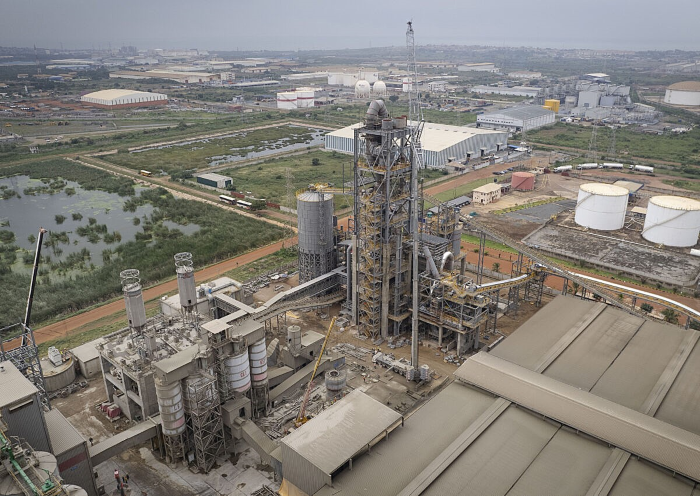AfrikanTrust
Zimbabwe is positioning itself at the heart of a lucrative trade frontier—one driven by orchards, global appetites, and geopolitical ambition. With the launch of the Zimbabwe-China Avocado and Macadamia Inward Buyers Mission (April 8–10, 2025), Zimbabwe’s trade development agency ZimTrade is signaling a pivot toward deepening agricultural trade ties with one of the world’s most powerful economies: China.
At the centre of this push is Chipinge, the lush eastern region of Zimbabwe where subtropical conditions produce world-class avocados and macadamia nuts—two commodities now emerging as the poster crops of a new era in Sino-Zimbabwe business relations.
But this story is more than just about fruits and nuts. It’s about geostrategic diversification, food security, climate resilience, and the recalibration of South-South trade dynamics. As Zimbabwe aims to diversify away from mineral dependency and China looks to secure stable agricultural supply chains amid rising global tensions, both countries appear primed to grow a mutually beneficial, sustainable trade relationship.
China and Zimbabwe have long-standing economic ties, historically dominated by mineral exports, construction contracts, and infrastructure investments. In recent years, China has funded roads, dams, airports, and the expansion of Zimbabwe’s energy infrastructure—including the Kariba South Hydro and Hwange Thermal Power projects.
But as Harare seeks to rebrand itself as an agro-export powerhouse, and Beijing diversifies food imports to reduce dependency on politically sensitive suppliers like the U.S., a new agricultural chapter is opening.
At the 2024 Forum on China-Africa Cooperation (FOCAC) in Beijing, both countries signed a Phytosanitary Protocol for Zimbabwean Avocado Exports, effectively granting market access for Zimbabwean produce to China’s enormous consumer base. This deal follows successful avocado market access granted to Kenya and Peru—suggesting Zimbabwe is entering a competitive but promising arena.
China’s domestic demand for “superfoods”—avocados, macadamias, blueberries—is skyrocketing. Once a novelty item, the avocado has gained prominence among China’s growing middle class, which increasingly consumes Western-style health foods and wellness products. Avocados have been dubbed “green gold” for their high retail value and export profitability.
In 2023 alone, China imported over US$151.2 million in avocados and US$22.7 million in macadamias. Zimbabwe’s share—US$8.5 million—might appear modest, but it reflects a doubling from 2022. The opportunity for growth is immense, particularly given Zimbabwe’s agroecological edge and early-mover advantage on phytosanitary compliance.
Zimbabwe is emerging from years of economic stagnation and isolation, and agriculture is now being reframed as a driver of export-led growth. Zimbabwe boats of fertile land and a favorable climate for high-value horticultural crops, a relatively skilled agricultural workforce and government-backed export incentives (through ZimTrade and the Ministry of Agriculture). The country’s growing network of agro-processing initiatives and export-certified packhouses presents another incentive for foreign investors to look in.
These fundamentals appeal to Chinese buyers and agri-investors keen to secure upstream supply chains. Many Chinese firms, especially state-linked agriculture conglomerates, are looking for stable production bases in Africa to buffer against climate volatility and logistics shocks seen in recent years. For Zimbabwe, Chinese FDI could bring capital, technology transfer, and guaranteed off-take agreements, helping scale up production and drive local value addition.
The recent rush of Chinese interest in Zimbabwe’s farmlands has sparked some concerns among local stakeholders. Civil society groups and economists warn that without proper regulatory oversight, foreign land deals and agri-investment schemes could replicate colonial-era extractive models, undermining food sovereignty and rural development.
There are also questions about environmental sustainability. Large-scale avocado and macadamia farming requires substantial water, and Zimbabwe’s irrigation infrastructure is uneven. Critics point to risks of water stress, deforestation, and monoculture dependencies, particularly if smallholder farmers are excluded from export value chains.
To mitigate these concerns, ZimTrade says it is prioritizing inclusive value chains, working with both commercial farms and smallholder cooperatives. The agency is also pushing for partnership models that allow Chinese firms to invest in processing facilities and transport logistics, rather than just raw crop extraction.
For Zimbabwe, success will depend on more than just market access. The government must invest renewed efforts in building cold chain logistics and certification capacity to meet Chinese standards. Encouraging joint ventures over land leases to prevent disenfranchisement is another area the Harare must address. If delievered on, the government’s promise to upgrade local agro-processing industries to export higher-margin products and negotiating long-term trade arrangements that guarantee volume and price stability would be impactful.
China, in turn, gains not only reliable food imports but also influence in Southern Africa’s trade corridors—including links to Mozambique’s ports and regional logistics hubs.
As the Buyers Mission unfolds in Chipinge, Zimbabwe hopes to lock in supply deals that will boost foreign exchange earnings, create rural employment, and signal international investor confidence. Meanwhile, China sees a resilient and resource-rich African partner ready to grow with it.
But the road ahead is not without potholes. Much will depend on transparent governance, climate-conscious practices, and the political will to foster equitable growth. If done right, Zimbabwe’s orchards could not only fuel economic recovery—but also define a new era of sustainable Sino-African agri-partnerships.




